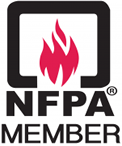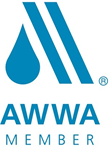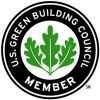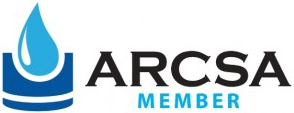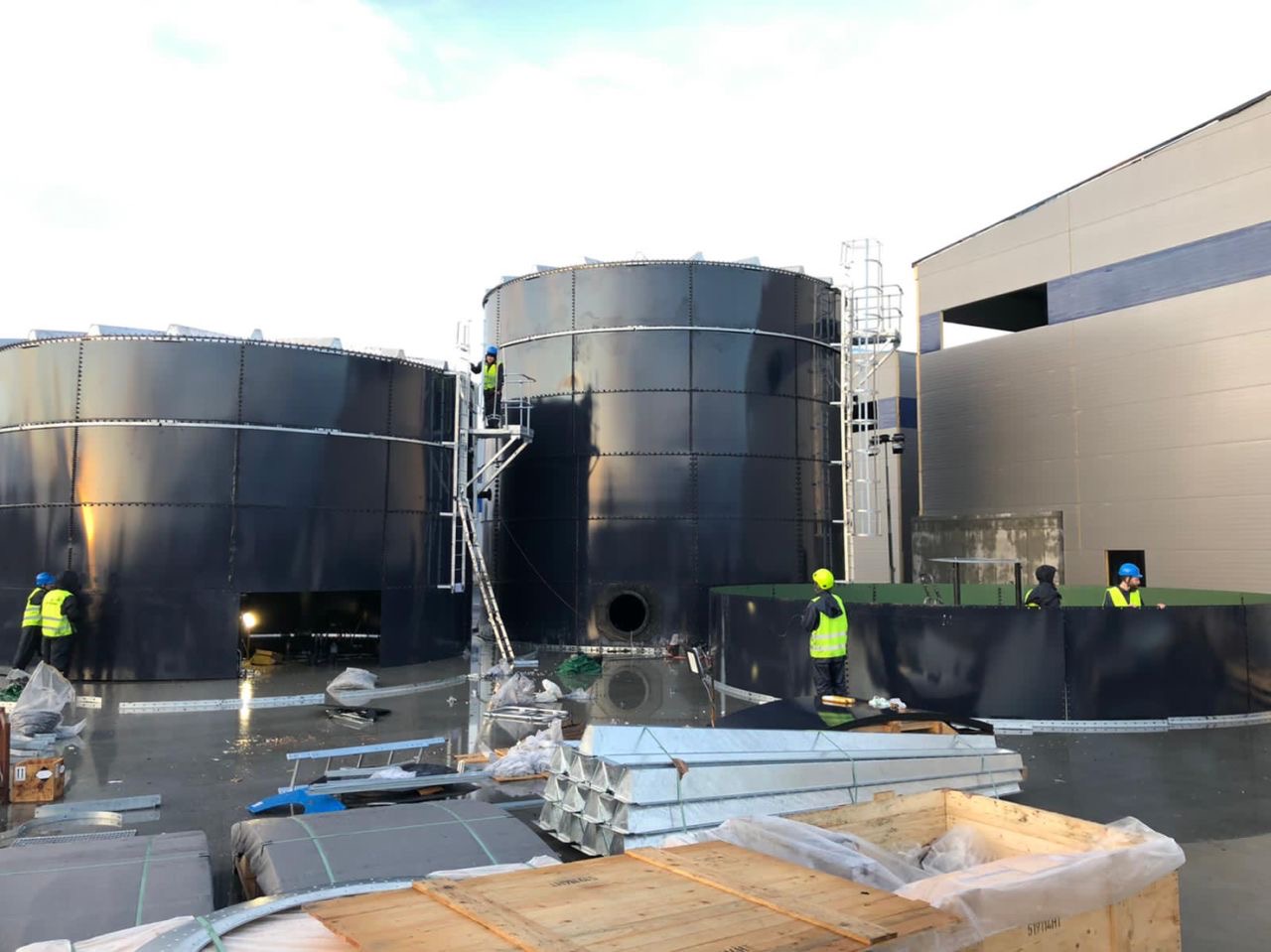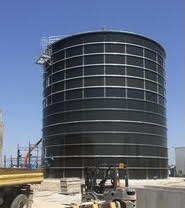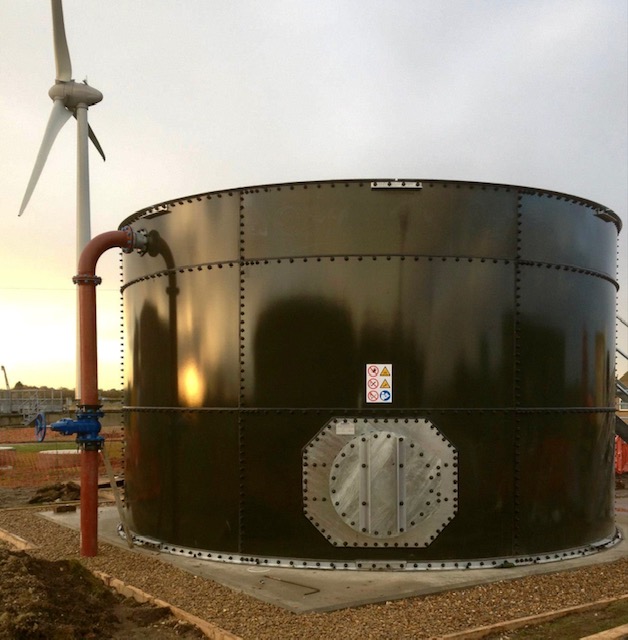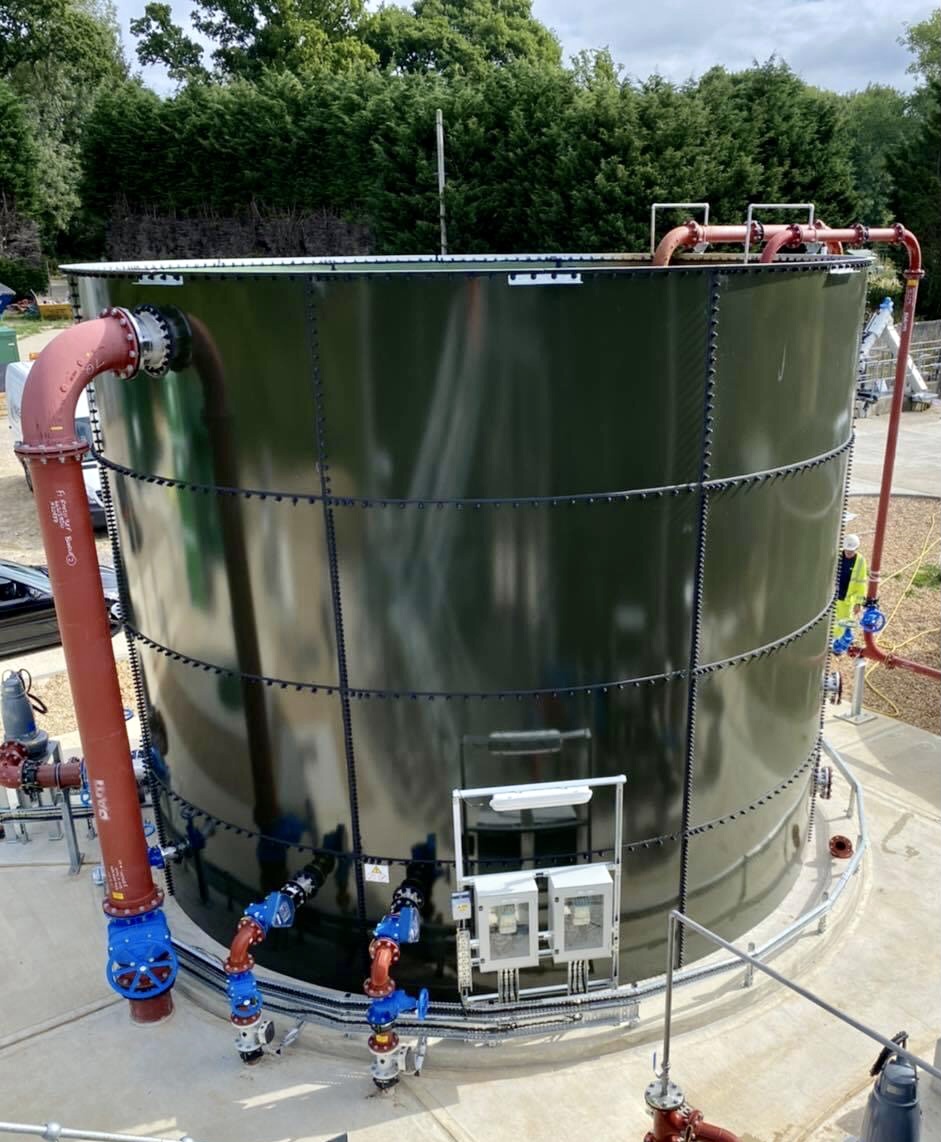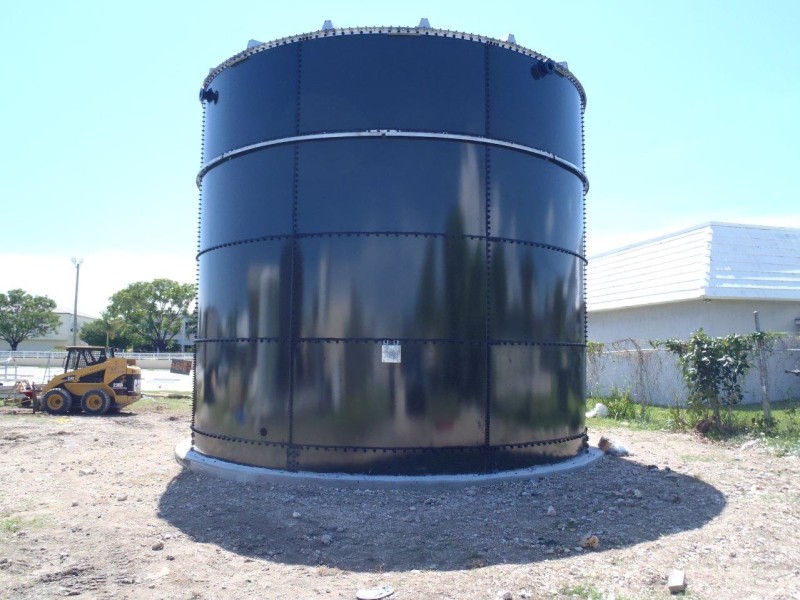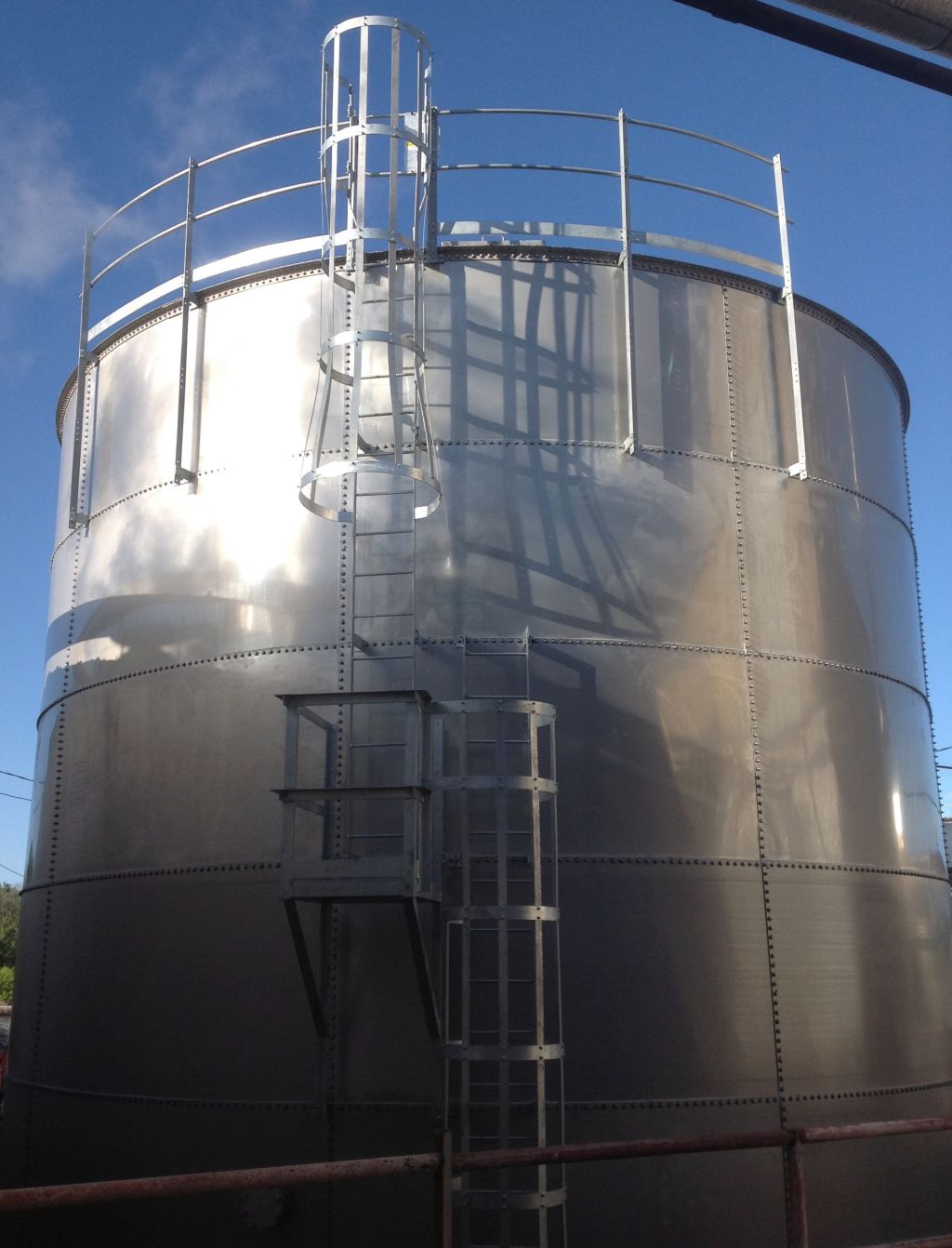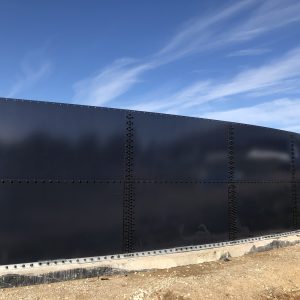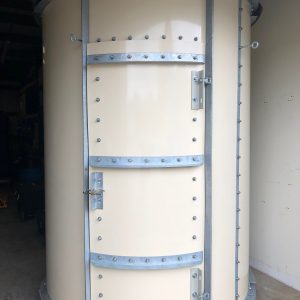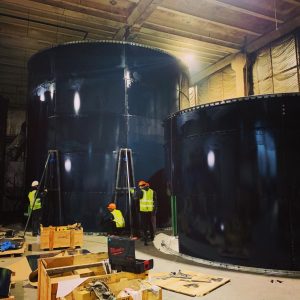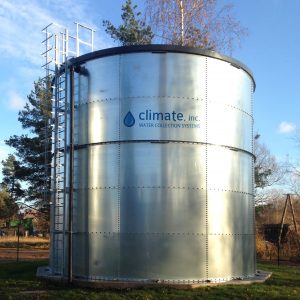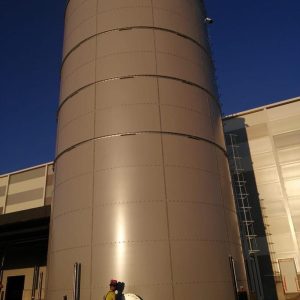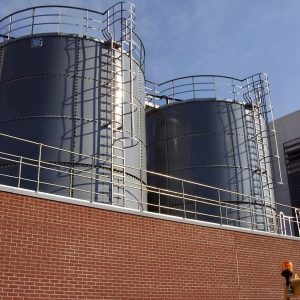Description
Glass-Fused-to-Steel (GFS) is glass that has been fired (heat-processed) in a kiln which facilitates the interfacial fusion reactions that combine the two materials. For there to be a fusion of two materials, there must be a chemical bond at a molecular level. Climate LLC is the market leader in the manufacture and supply of Glass-Fused-to-Steel Tanks and Silos. Our company has been providing durable and cost effectively engineered containment solutions in Municipal, Industrial, and Agricultural environments worldwide. We export to over 52 countries and in excess of 10,000+ tanks, silos, and chamber systems have been installed worldwide, each with the ability to withstand local environmental extremes, from the cold of the arctic to the heat of the desert.
GFS sheets are produced under strict quality control, without any deviations from the standards. Each sheet is tested individually, and if a defect is discovered, it will be recycled, not repaired. Mastic is used as a sealant and designed for exactly that purpose. L-shaped, galvanized steel profiles are used for the base and the top of the tank fixings. They are curved to each tank individually. Depending on the size of the tank, a wind stiffener is also used, to withstand both the contents and the wind load. Tanks are equipped with inlet, outlet, overflow and drain connections as standard. According to customer requirements, connections are adapted according to the project specification. Very often it is necessary to install the tank with insulation. We offer a submersible 3 kW heater and external insulation. For each project specification, we recommend the right solution, in order for the stored substance not to freeze, even in the most extreme weather conditions. According to customer requirements, we equip tanks with accessories – side shell manway, caged ladder, service platform, etc.
Advantage of GFS Tanks:
- Construction time – compared with concrete and welded tank building which usually take up months, the installation of GFS tanks takes just days.
- Corrosion resistance – withstand the largest PH range from its contents.
- Design life – designed for a 30 year lifespan.
- Capacity – tanks can be easily expanded: not only can they be easily constructed, but also expandable, removed, and reconstructed.
Epoxy Coated Climate Tanks™ offers the premier epoxy coated steel tank that have a higher quality storage solution for storing a variety of light corrosive liquids including products such as drinking water. Our epoxy coated tanks are constructed from high-grade steel and coated with a specialized epoxy coating that provides superior resistance to corrosion and abrasion. A major factor in choosing our epoxy coated tanks that are 100% factory finished before shipment to the customer: the elimination of weather factors that occur when applying coatings in the field after constructing a tank. There is no waiting for the weather to be within specific conditions in order to apply the epoxy coating within the manufacturing process and careful monitoring lowers inconsistencies in the coatings. Our epoxy coated tanks provide a large scale of potential uses from potable water storage to fire suppression tanks and are more cost-effective than concrete, fiberglass, and field welded steel tanks.
Weathered Finish Steel, often referred to by the generalized trademark COR-TEN steel and sometimes written without the hyphen as corten steel, is a group of steel alloys which were developed to eliminate the need for painting and form a stable rust-like appearance if exposed to the weather for several years. Weathering refers to the chemical composition of these steels, allowing them to exhibit increased resistance to atmospheric corrosion compared to other steels. This is because the steel forms a protective layer on its surface under the influence of the weather.
The corrosion-retarding effect of the protective layer is produced by the distribution and concentration of alloying elements in it. The layer protecting the surface develops and regenerates continuously when subjected to the influence of the weather. In other words, the steel is allowed to rust in order to form the protective coating; all of these Climate products are delivered un-patinated. It is very widely used in marine transportation, in the construction of intermodal containers as well as visible sheet piling along recently widened sections of London’s M25 motorway. The first use of weathering steel for architectural applications was the John Deere World Headquarters in Moline, Illinois. The use of weathering steel was seen as a cost-cutting move in comparison with the contemporary railcar standard of stainless steel. Weathering steel was used to build the exterior of Barclays Center, made up of 12,000 pre-weathered steel panels engineered by ASI Limited & SHoP Construction. The New York Times says of the material, “While it can look suspiciously unfinished to the casual observer, it has many fans in the world of art and architecture.”
Powder Coating is a type of coating that is applied as a free-flowing, dry powder. The main difference between a conventional liquid paint and a powder coating is that the powder coating does not require a solvent to keep the binder and filler parts in a liquid suspension form. The coating is typically applied electrostatically and is then cured under heat to allow it to flow and form a “skin”. The powder may be a thermoplastic or a thermoset polymer. It is usually used to create a hard finish that is tougher than conventional paint. Powder coating is mainly used for coating metals, such as household appliances, aluminum extrusions, drum hardware, and automobile and bicycle parts. There are two main categories of powder coating: thermosets and thermoplastics. The thermosetting variety incorporates a cross-linker into the formulation. When the powder is baked, it reacts with other chemical groups in the powder to polymerize, improving the performance properties. The thermoplastic variety does not undergo any additional actions during the baking process as it flows to form the final coating. The most common polymers used are polyester, polyurethane, polyester-epoxy (known as hybrid), straight epoxy (fusion bonded epoxy) and acrylics.
Galvanized Coated tanks are engineered to your site’s specification and installed by a trained crew. Galvanized bolted steel tanks have been the workhorse in the liquid storage industry for many years. These tanks are fabricated with galvanized steel panels bolted together making them economical, easy to transport to project site, easy to erect, and have a long-lasting interior and exterior finish. Tank bolts have high tensile strength and are available in three finishes: hot-dipped galvanized, encapsulated & stainless steel. For resistance to a variety of liquids such as water, wastewater and oils, several liner materials are available including ethylene propylene diene monomer (EPDM), butyl, and poly vinyl chloride (PVC) with or without NSF 61 Potable Certification. Tank nozzle and MaxAccess™ XXL (side manways) gaskets are precision punched to fit exactly and are formulated to remain flexible and not separate from the tank surface. Climate Tanks™ steel bolted tanks meet and exceed a number of industry standards including American Water Works Association (AWWA) D103, National Fire Prevention Association (NFPA 22), FM Approvals, European Union (EN), and can be used for a variety of applications including potable water, wastewater, fire protection systems, slurry and agricultural, mining, ClimaHarvest™ (rainwater and stormwater harvesting), dry bulk, certain chemicals, processing, cooling tower and blow down, and many more applications.
